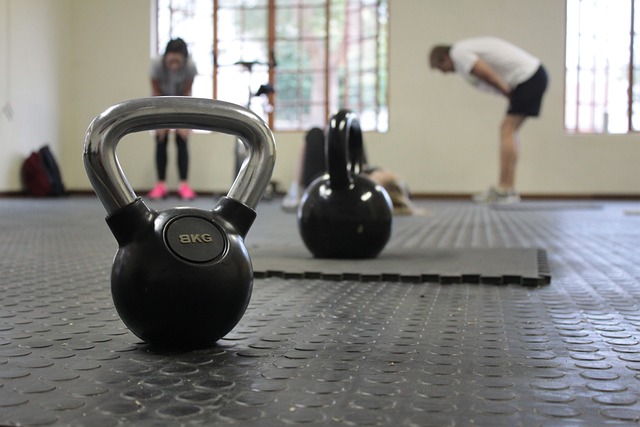When it comes to measuring your overall health, most people think of blood pressure, cholesterol, or BMI. But an often-overlooked indicator grip strength may actually be one of the most powerful predictors of how long and how well you’ll live.
Emerging medical research shows that the strength of your handshake may speak volumes about your heart, brain, and even your risk of early death. In this article, we’ll dive into what grip strength reveals about your health, the science behind it, and how you can start strengthening this simple but significant metric.
What Is Grip Strength and Why Is It Important?
Grip strength refers to the force generated by the muscles in your hands and forearms. It’s commonly used in physical therapy, sports medicine, and geriatrics as a quick, non-invasive way to assess muscular health.
But its implications go far beyond fitness.
Key Functions of Grip Strength
-
Reflects total body muscle mass
-
Indicates neuromuscular function and coordination
-
Predicts mobility, fall risk, and frailty in older adults
-
Correlates with heart and lung health
It’s not just about your ability to open jars or lift weights. Studies now show that lower grip strength is associated with a higher risk of chronic diseases and even premature mortality.
Medical Research Grip Strength as a Predictor of Longevity
Over the past decade, numerous clinical studies have highlighted grip strength as a biomarker for aging and disease.
Major Research Findings
-
The PURE Study (The Lancet, 2015)
A global study of over 140,000 participants found that lower grip strength was more predictive of death than systolic blood pressure. A 5-kg decrease in grip strength was associated with a 17% increased risk of death. -
BMJ Study on Frailty (2019)
Research in the British Medical Journal confirmed that weak grip strength is a strong predictor of frailty, hospitalizations, and disability among older adults even more than walking speed or balance tests. -
Neurodegenerative Links
A 2022 study published in Frontiers in Aging Neuroscience linked decreased grip strength with faster cognitive decline and early onset of dementia-related diseases like Alzheimer’s. -
Cardiovascular Health
Researchers from the UK Biobank found that grip strength is inversely related to cardiovascular events, including heart attacks and strokes stronger grip, lower risk.
Why Is Grip Strength Such a Strong Indicator?
Grip strength is an easy-to-measure, yet comprehensive marker. It doesn’t just test your hand it reflects your entire body’s muscle function and overall vitality.
Here’s why it matters
-
Systemic Muscle Health Strong grip often correlates with greater overall muscle mass and strength, which is essential for metabolic health and injury prevention.
-
Inflammation and Aging Reduced muscle strength is associated with chronic low-grade inflammation, which contributes to aging and disease progression.
-
Neurological Status Grip strength also gives insight into the integrity of your nervous system. Reduced hand strength may signal early nerve degeneration or loss of motor control.
-
Functional Independence In older adults, grip strength is strongly tied to quality of life including the ability to dress, cook, and live independently.
Who Should Pay Attention to Grip Strength?
Everyone. But especially
-
Adults over 40, where muscle mass and strength naturally decline
-
People with sedentary lifestyles or desk jobs
-
Those with chronic health conditions such as diabetes or arthritis
-
Athletes looking to boost performance and injury prevention
-
Older adults concerned with falls, mobility, or independence
How to Improve Your Grip Strength Naturally
The good news? Grip strength is highly trainable and gains come quickly with consistent effort.
1. Daily Hand Exercises
Use hand grippers, squeeze stress balls, or rubber resistance bands. Try “crushing,” “pinching,” and “holding” movements for variety.
2. Strength Training
Incorporate exercises like
-
Deadlifts and farmer’s carries
-
Pull-ups and rows
-
Kettlebell swings or hangs from bars
These compound lifts naturally engage and strengthen grip.
3. Lifestyle Adjustments
-
Carry groceries by hand
-
Avoid using assistive handles or backpacks with wheels
-
Take breaks from tech devices to stretch your fingers and wrists
4. Nutrition and Recovery
Muscle repair and nerve health depend on key nutrients
-
Protein for muscle rebuilding
-
Magnesium, vitamin D, and omega-3s for neuromuscular health
-
Hydration to support tissue elasticity and endurance
Testing Your Grip Strength Without a Device
While a hand dynamometer gives the most accurate measure, you can still track your grip strength progress with simple methods
-
Hang test See how long you can hang from a bar (start with 10–20 seconds).
-
Jar test Track how easily you can open tight jars or lift heavy objects over time.
-
Reps with resistance Count how many full squeezes you can do in one minute using a hand gripper.
Keep a log to notice trends especially if you’re training or in recovery.
The Takeaway Grip Strength Is a Health Signal You Can’t Ignore
Your hands can say a lot about your health without a single word. Grip strength is a proven indicator of everything from heart health to brain function and overall longevity. It’s one of the simplest and most overlooked ways to assess how well you’re aging.
And unlike many medical indicators, this one is in your hands literally. Whether you’re in your 30s, 50s, or beyond, improving your grip strength can help you live longer, stay more active, and maintain your independence well into your later years.


